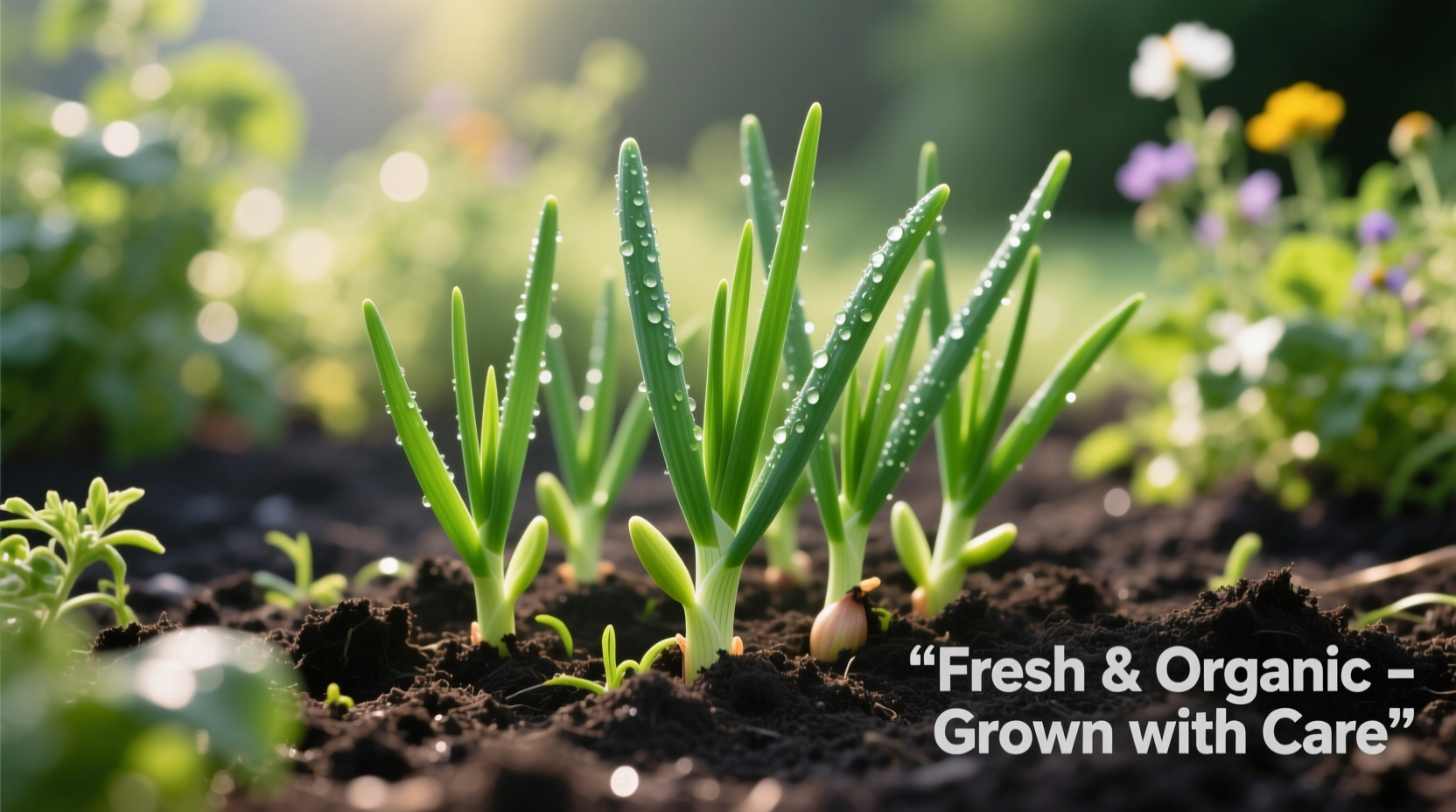Green onions, also known as scallions, offer one of the quickest and most rewarding gardening experiences for beginners and seasoned growers alike. Unlike many vegetables, you can harvest them in as little as three weeks and enjoy continuous production with proper care. This guide provides science-backed cultivation methods verified by agricultural extension services across multiple growing zones.
Why Green Onions Are the Perfect Starter Crop
Green onions thrive in diverse conditions, making them ideal for container gardening, raised beds, or traditional garden plots. According to the USDA Agricultural Research Service, Allium fistulosum (bunching onions) and Allium cepa var. cepa (common onions grown young) require minimal space—just 2-4 inches between plants—and tolerate a wide range of soil conditions. Their shallow root system makes them perfect for balcony gardens or kitchen windowsills, with successful growth documented even in Zone 2 climates through season extension techniques.
| Variety Type | Days to Harvest | Best Growing Zones | Unique Benefits |
|---|---|---|---|
| Evergreen Hardy White | 20-25 days | 2-10 | Cold-hardy, regrows multiple times |
| Beltsville Bunching | 50-60 days | 3-10 | Disease resistant, consistent production |
| Red Beard | 25-30 days | 4-9 | Vibrant color, mild flavor |
| Multiplier Onions | Perennial | 3-9 | Divides naturally, no replanting needed |
Planting Timeline for Continuous Harvest
Successful green onion cultivation depends on strategic planting intervals. The University of California Cooperative Extension recommends succession planting every 2-3 weeks throughout the growing season. This approach prevents glut and shortage, ensuring fresh scallions are always available.
Spring planting: Start seeds indoors 6-8 weeks before last frost date, or direct sow when soil reaches 50°F (10°C). The National Gardening Association reports optimal germination occurs between 60-75°F (15-24°C).
Summer planting: Provide afternoon shade in hot climates. Green onions bolt (go to seed) when temperatures exceed 85°F (29°C) for extended periods.
Fall planting: In Zones 6+, plant 8-10 weeks before first frost for overwintering. Cornell University's research shows mulching with 3-4 inches of straw protects roots through winter for early spring harvest.
Step-by-Step Planting Guide
Soil preparation: Green onions prefer slightly acidic to neutral soil (pH 6.0-7.5). Amend garden soil with 2-3 inches of compost before planting. For container growing, use a quality potting mix with perlite for drainage.
Planting depth and spacing: Sow seeds 1/4 inch deep, 1 inch apart in rows 12-18 inches apart. When seedlings reach 2 inches tall, thin to 2-4 inches between plants. The USDA Natural Resources Conservation Service confirms proper spacing prevents disease and maximizes bulb development.
Watering requirements: Maintain consistent moisture—about 1 inch of water per week. Drought stress causes premature bolting, while overwatering promotes fungal diseases. Morning watering reduces disease risk by allowing foliage to dry during the day.

Troubleshooting Common Problems
Yellowing leaves: Often indicates nitrogen deficiency. Side-dress with compost tea or balanced organic fertilizer when plants reach 4 inches tall. Avoid high-nitrogen fertilizers which promote excessive top growth at the expense of root development.
Pest management: Onion thrips and maggots are common pests. According to the Cornell Integrated Pest Management program, floating row covers installed at planting prevent most insect damage. For existing infestations, a solution of 1 tablespoon neem oil per quart of water applied weekly controls pests without harming beneficial insects.
Bolting prevention: When green onions send up flower stalks, flavor becomes bitter. Prevent bolting by maintaining consistent moisture, providing shade in hot weather, and harvesting before bulbs swell significantly. The University of Minnesota Extension confirms that daylength triggers bolting in some varieties, so choose appropriate varieties for your latitude.
Harvesting and Regrowing Techniques
Harvest green onions when they reach pencil thickness (about 1/4 inch in diameter). Pull entire plants or cut 1 inch above the root ball to allow regrowth. The Agricultural Marketing Resource Center reports that properly harvested green onions yield 3-4 cuttings before needing replanting.
Regrow green onions from kitchen scraps: Place root ends (1-2 inches with roots intact) in 1/2 inch of water on a sunny windowsill. Change water every 2-3 days. Within 7-10 days, new growth appears. After 2-3 weeks, transplant to soil for stronger, more flavorful regrowth.
Advanced Yield-Boosting Strategies
Succession planting calendar: Create a planting schedule that ensures continuous harvest. For example, in Zone 5: - March 15: First indoor planting - April 1: First outdoor planting - April 15: Second planting - May 1: Third planting - Continue every 2-3 weeks through August
Companion planting: Green onions grow well with carrots, beets, and lettuce. Their scent deters pests from these companions. Avoid planting near peas or beans, which inhibit onion growth. Oregon State University research shows interplanting with carrots increases yields of both crops by 20%.
Season extension: Use cold frames or hoop houses to extend the growing season. The USDA Seasonal Extension Project demonstrates that simple low tunnels can extend green onion production by 4-6 weeks into fall and provide early spring harvests.











 浙公网安备
33010002000092号
浙公网安备
33010002000092号 浙B2-20120091-4
浙B2-20120091-4